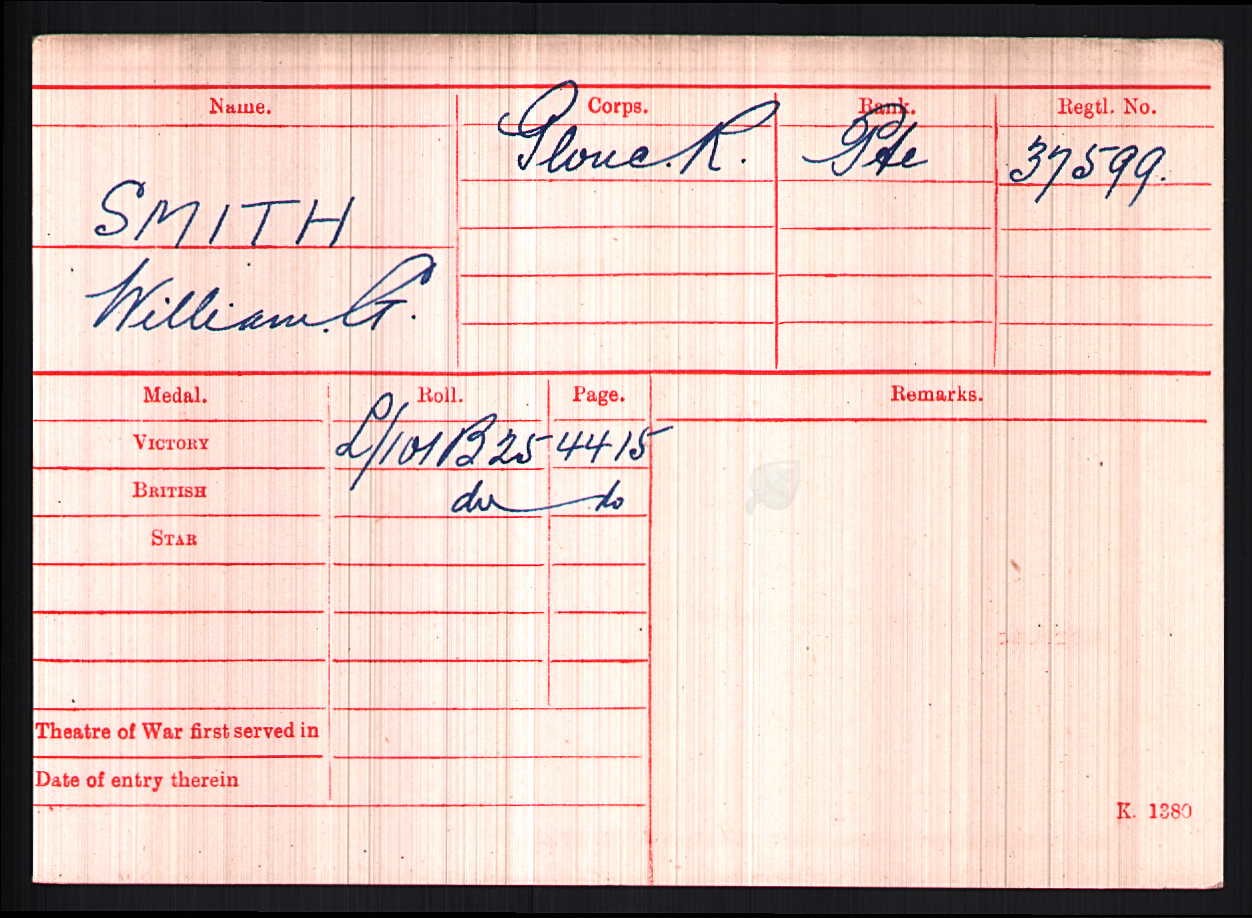
William Geoffrey Smith was born in Leominster in Herefordshire in 1897.
Along with his parents, Thomas and Annie Smith, he lived at number 3 South Street. He had two brothers and three sisters. Although named William Geoffrey at birth, he was always known within the family as Geoffrey. By the age of 14 he had gained two more sisters and was working as a Grocer’s boy.
On joining the army, probably as a result of conscription, he was initially with the Herefordshire Regiment but at some point, he was transferred to the 12th (Service) (Bristol) Battalion of the Gloucestershire Regiment; most likely as a casualty replacement.
The 12th (Bristol) Battalion, Gloucestershire Regiment was raised at Bristol on the 30th of August 1914 by the Citizens Recruiting Committee. After training close to home, in June 1915 they joined 95th Brigade, 32nd Division at Wensleydale, being officially adopted by the War Office on the 23rd of June.
They shipped-out to France on the 21st of November 1915 and on the 26th of December that year, were transferred with 95th Brigade to the 5th Division as part of an exchange designed to stiffen the inexperienced 32nd Division with regular army troops.
In March 1916, the 5th Division took over a section of front-line between St Laurent Blangy and the southern edge of Vimy Ridge, near Arras. They moved south in July and saw action at, High Wood, The Battle of Guillemont, The Battle of Flers-Courcelette, The Battle of Morval and The Battle of Le Transloy. In October they moved to Festubert and remained there until March 1917 when they moved in preparation for the Battles of Arras.
They were finally disbanded in France on the 19th of October, 1918, having endured some of the fiercest fighting of the campaign.

In May 1917, having driven the Germans out of the French village of Fresnoy, the Canadians had effectively created a minor salient which threatened the main German defensive positions, known as the Hindenburg Line.
The German High Command was desperate to regain Fresnoy, with the loss of the village being described in one German regimental history as though: "a stone had been knocked out of the German defensive wall which had to be replaced without delay if the whole neighbouring position to the north and south were not to be gravely threatened"
German counter-attacks began immediately, with the village being hit by more than 100,000 German high explosive and gas shells. But the Canucks held firm!
Support for the Canadians came from the British 95th Brigade, which included the 12th Battalion of the Gloucester Regiment – their divisional history outlines the role played by Private William Geoffrey Smith’s Unit:
“The village formed a bulge in the line and the 95th had at first to throw back a defensive flank on their right…Early on the 8th of May, as dawn appeared, the Germans delivered a strong attack on the village…which was beaten off by the machine guns and rifles of the Gloucesters…then an intense bombardment burst on the whole of the left, followed by an infantry assault…the enemy pressed on and forced the Gloucesters out of the village, together with the Canadians on the left”
It was during this passage of fierce fighting that 20-year-old, Private William Geoffrey Smith was killed - on the 8th of May 1917.

Private 37599, William Geoffrey Smith's body was never recovered.
He is commemorated on Panel 6 of the Arras Memorial for the Missing which remembers almost 35,000 Commonwealth servicemen who died in the Arras sector between the spring of 1916 and the 7th of August, 1918 - the eve of the Advance to Victory. Those commemorated on this memorial, have no known grave.
William is also remembered on the upper part of the Lychgate of Ivington Church in Leominster (inscribed on an oval marble slab) and on a memorial plaque within Ivington Primitive Methodist Chapel. He was awarded the British War Medal and the Victory Medal - and his family also received a small pension.
William's Canadian comrades who died in the Battle of Fresnoy, are commemorated on the Vimy Memorial which is situated on the highest point of Vimy Ridge and is the focal point of Canadian remembrance for World War 1.



